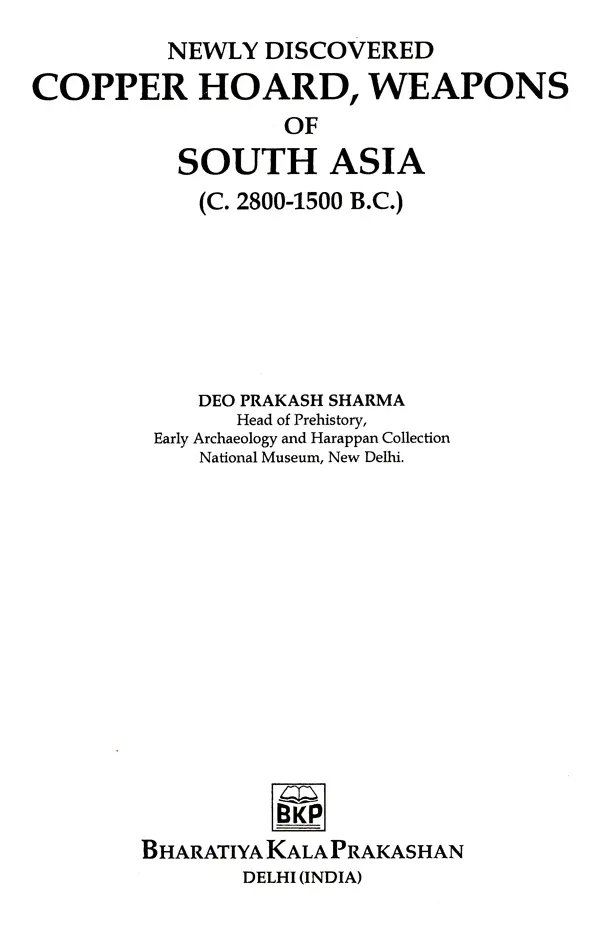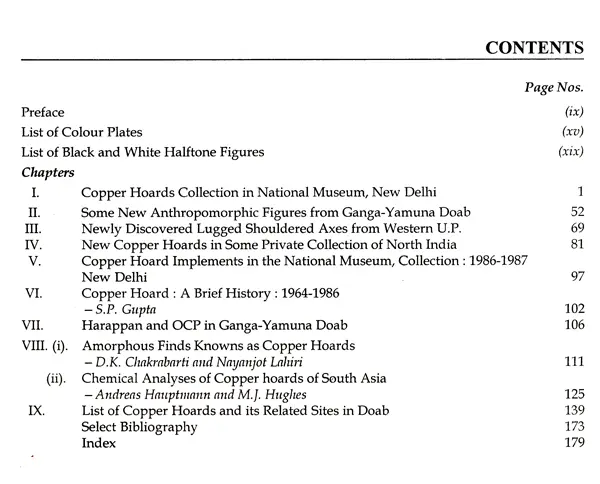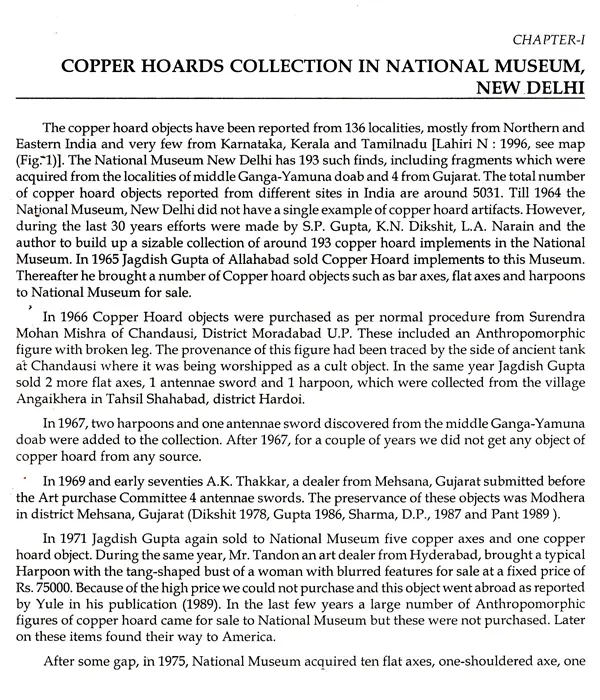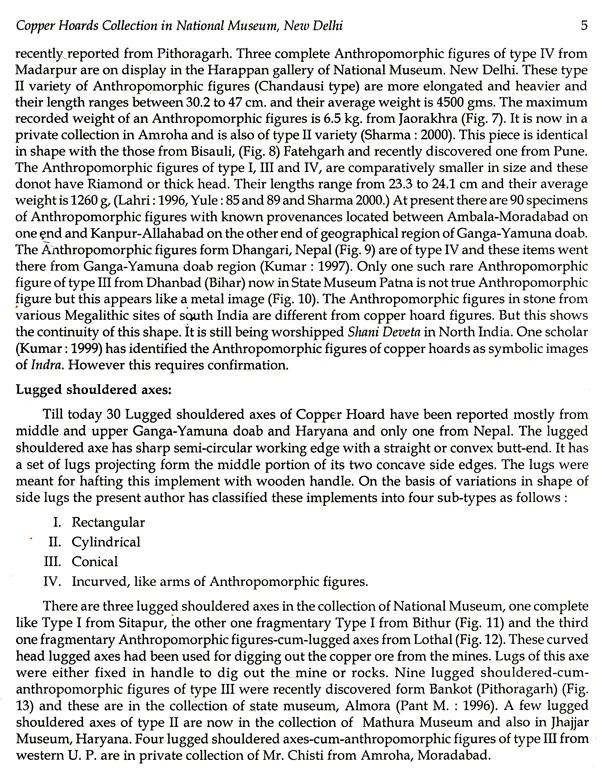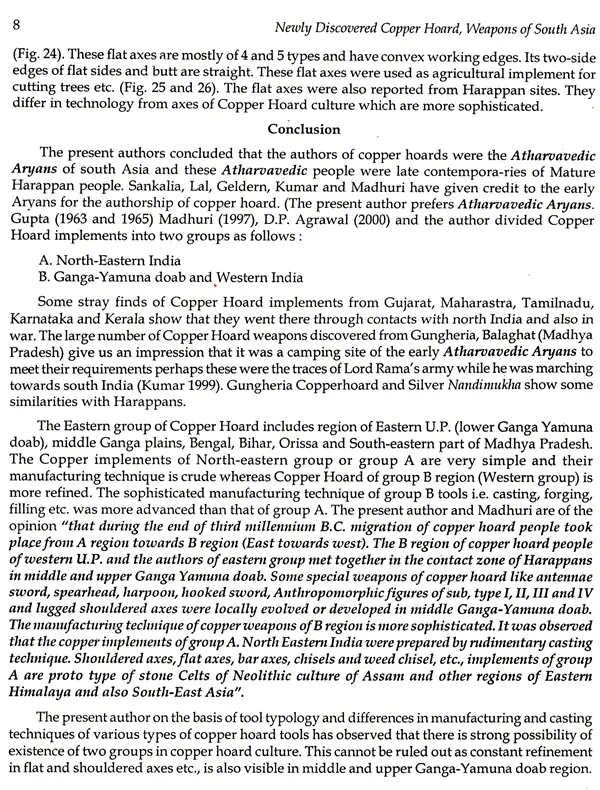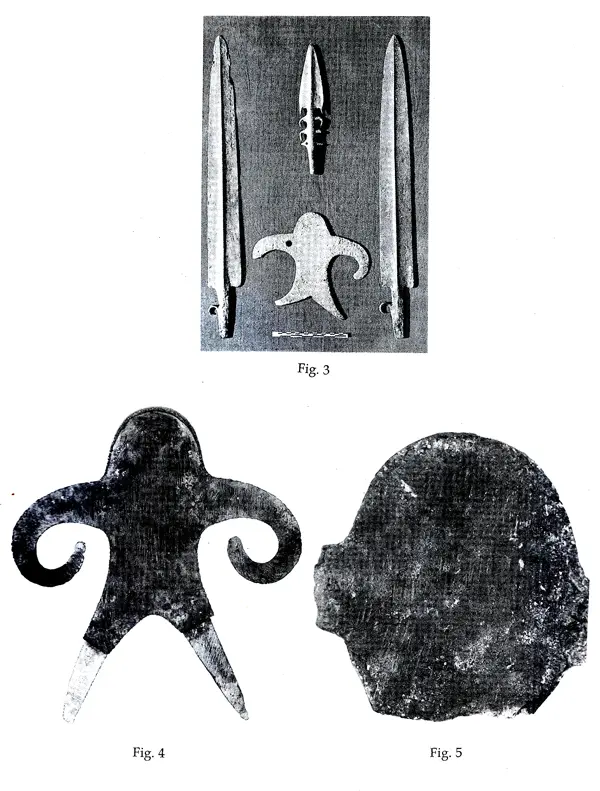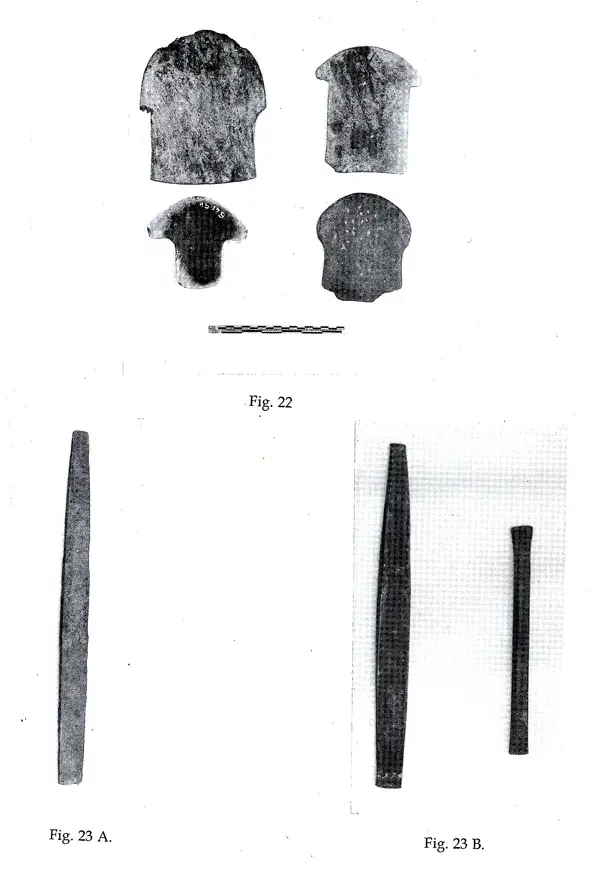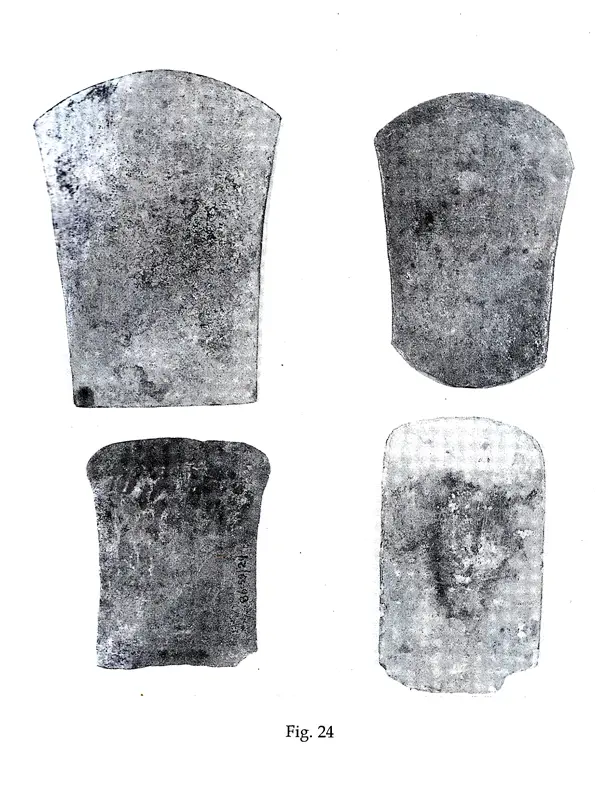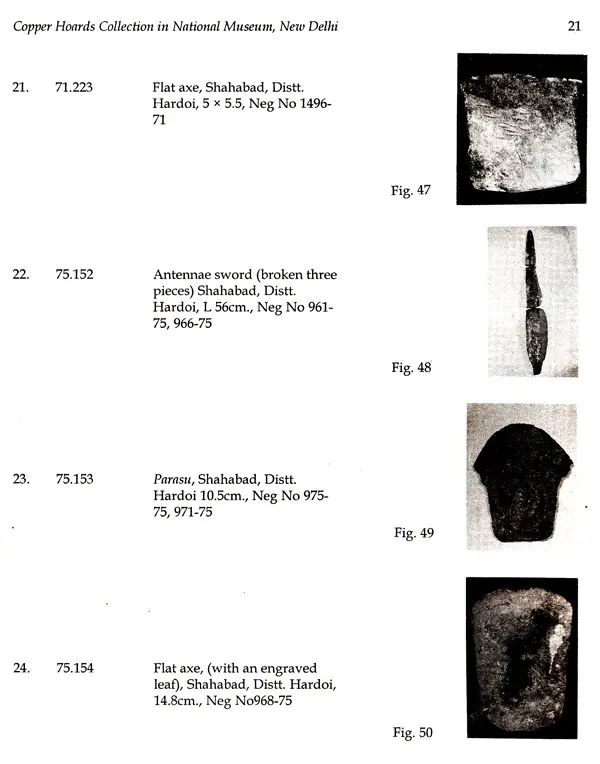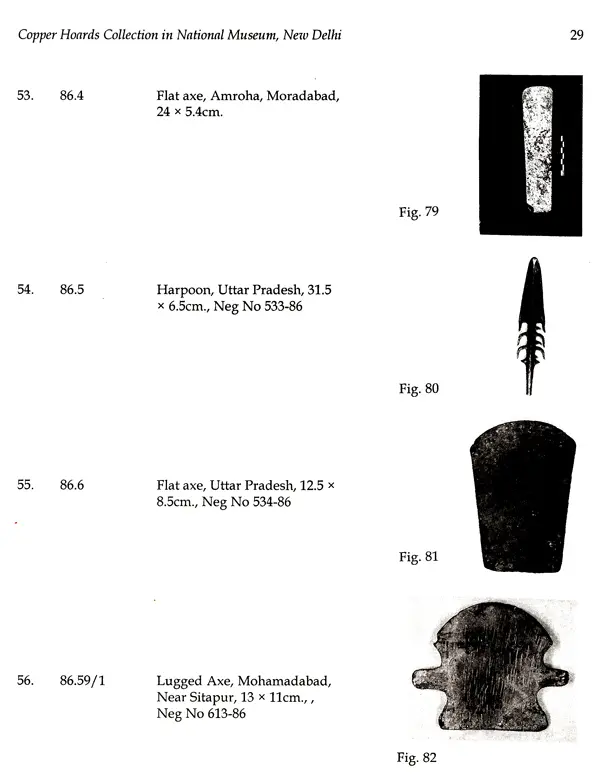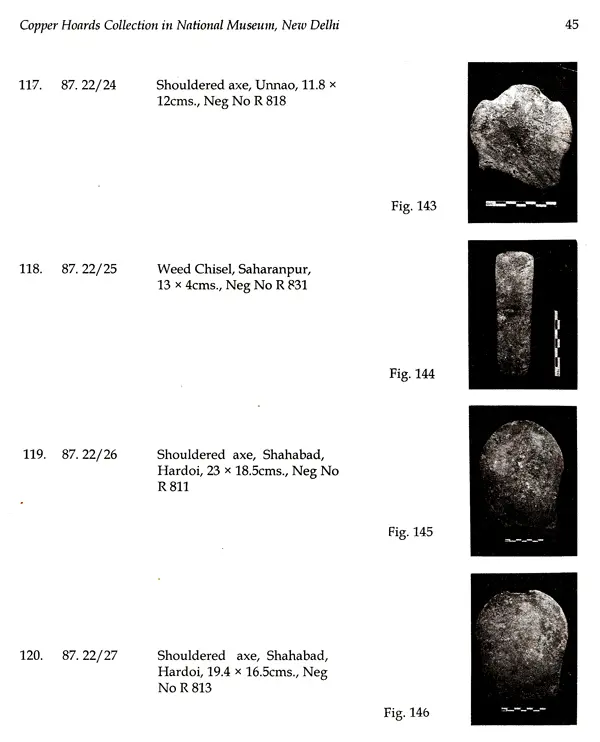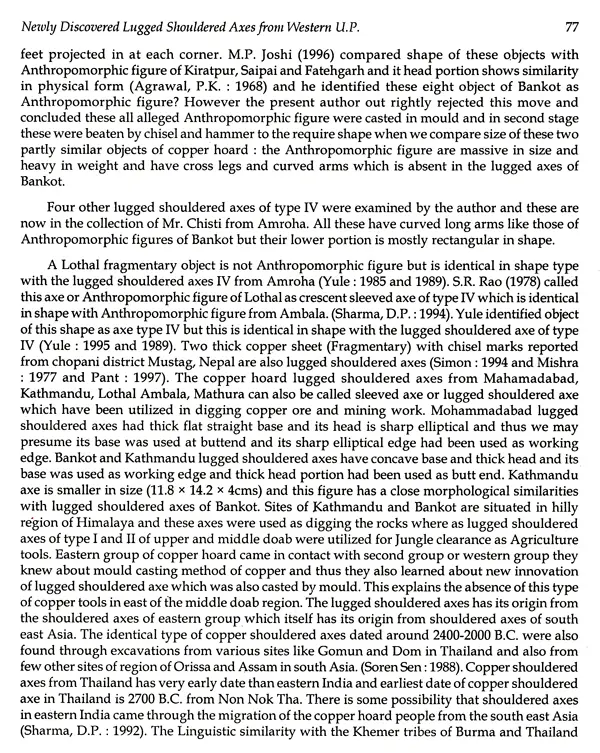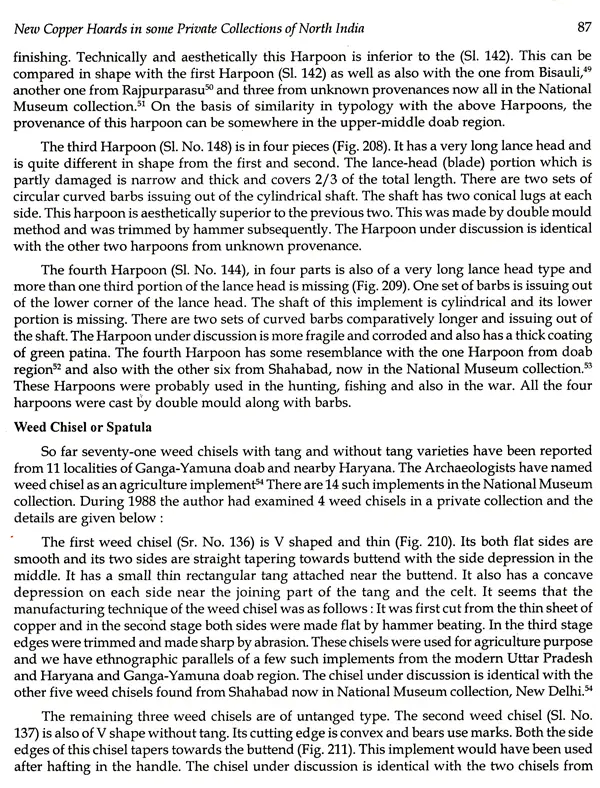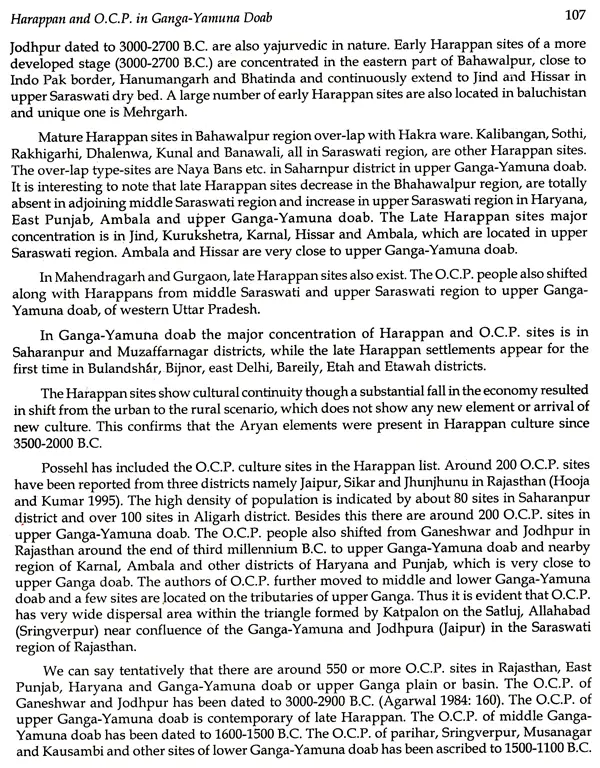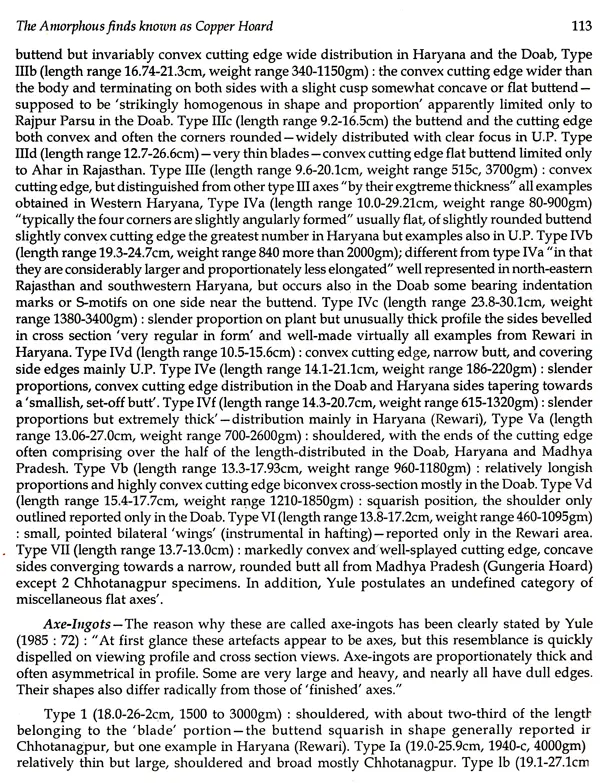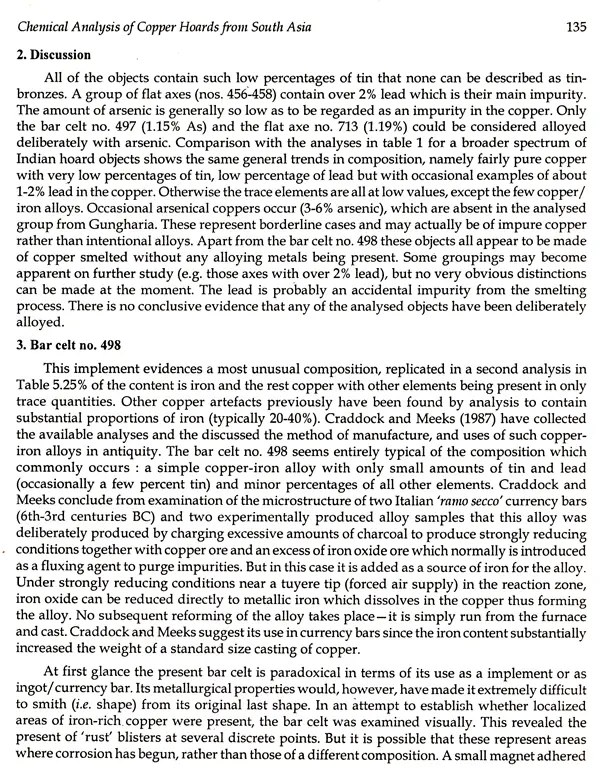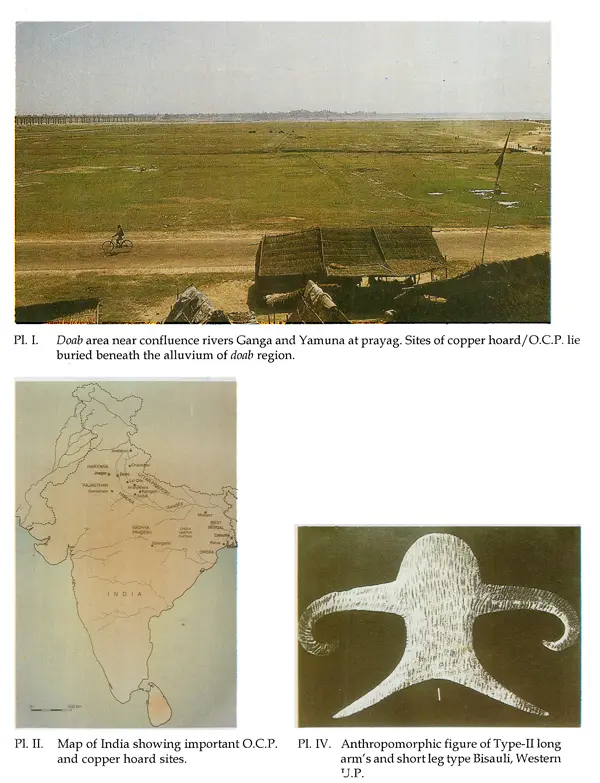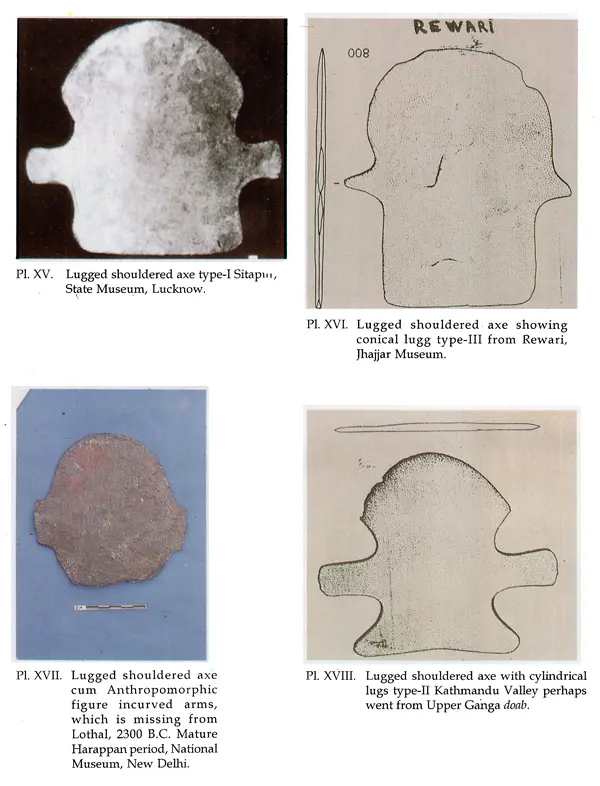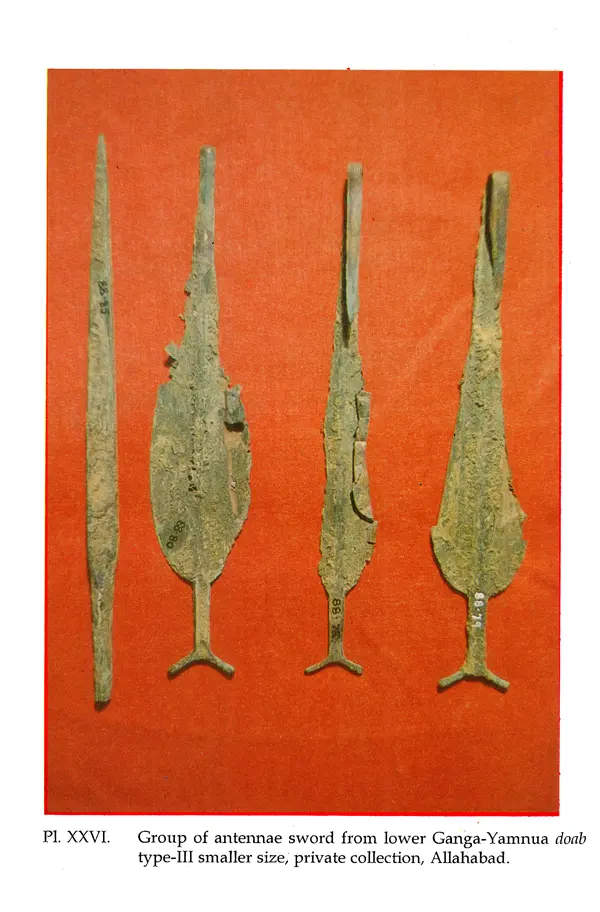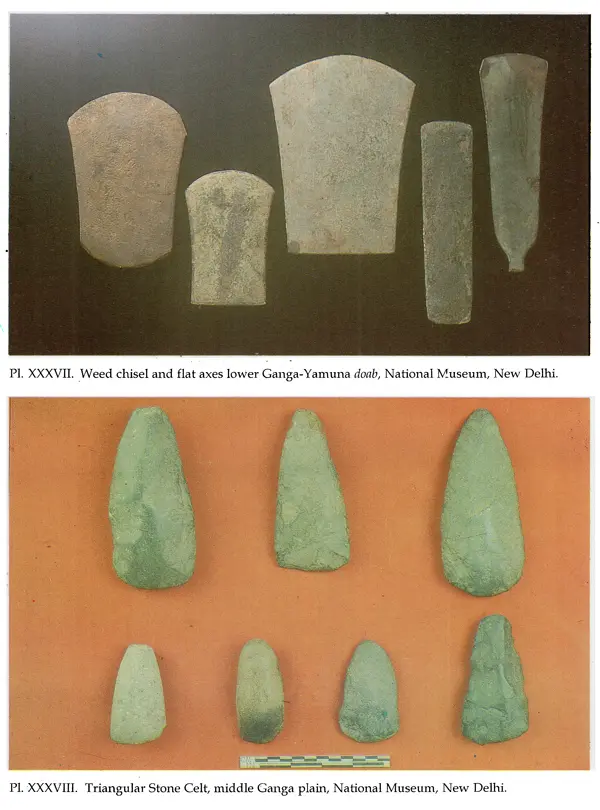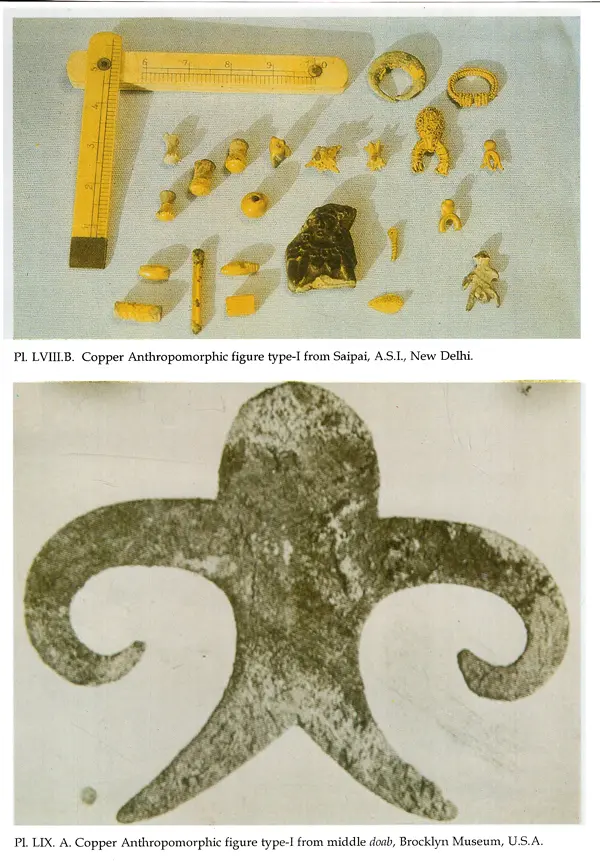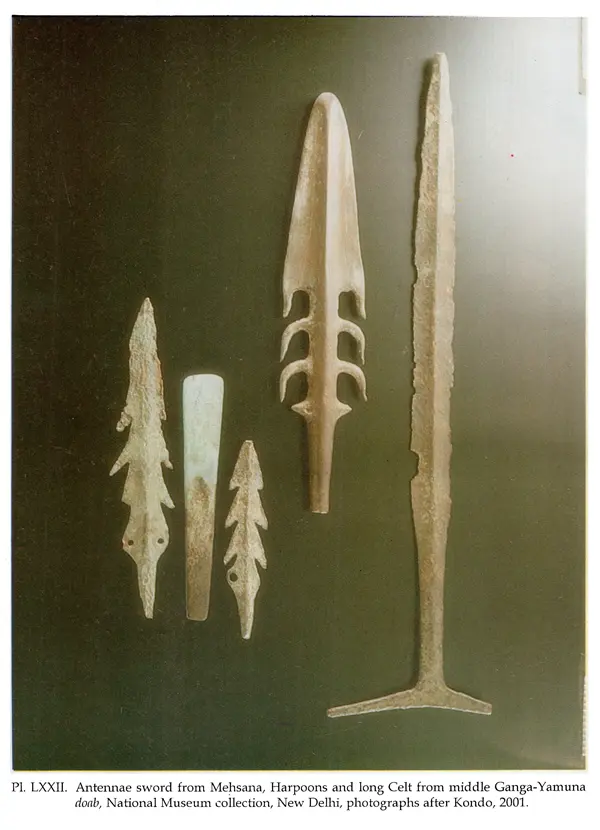
Newly Discovered Copper Hoard Weapons of South Asia
Book Specification
| Item Code: | UAN516 |
| Author: | Deo Prakash Sharma |
| Publisher: | Bharatiya Kala Prakashan |
| Language: | English |
| Edition: | 2002 |
| ISBN: | 818605085X |
| Pages: | 220 |
| Cover: | HARDCOVER |
| Other Details | 11.00 X 9.00 inch |
| Weight | 1.21 kg |
Book Description
This book deals with the copper hoard weapons (circa 2800-1500 BC) of proto-historic Bronze age of South Asia. It deals with 193 copper hoard weapons of National Museum, New Delhi along with new Anthropomorphs and lugged shouldered axes of copper hoard of, 1987 collection of National Museum, Archaeometallurgy of copper hoards, new copper hoards and O.CP. ceramics in Ganga-Yamuna doab.
The first chapter is on copper hoard in National Museum collection. Around 5031 copper hoard objects have been reported from 137 sites of South Asia. The National Museum, New Delhi has 193 such finds, which were acquired from the localities of middle Ganga-Yamuna doab, four antennae swords from Mehsana in Gujarat and a lugged shouldered axe from Lothal, The National Museum has also in its possession 5-Anthropomorph, 3-lugged shouldered axes, 20-antennae swords, 11-hookeds swords, 18-weed chisels, 46-flat shouldered axes, 15-chisels, 75-flat axes, 19-Harpoons and 2-Razers. According to me the authors of copper hoard implements were the Atharvavedic Aryans who were contemporary of Harappans and this tradition continued till Ramayana-Mahabharata age ie. circa 1600-1500 B.C
We have fixed the date of copper hoard from circa 2800 to 1500 B.C. The copper hoard tradition could be divided in two groups as follows:
(A) North Eastern group of middle Ganga plain.
(B) Ganga-Yamuna doab or upper Ganga plain and North-West India.
The copper hoard implements of North-Eastern group 'A' are crude whereas copper hoard implements of B' region are more refined. During the end of third millennium B.C. migration of copper hoard people took place from 'A' region to 'B' region and these two met together in the contact zone in upper Ganga-Yamuna doab with mature Harappans and learnt new technique from Harappans copper smiths.
The author is of the opinion that the copper hoards implements of group 'B' and O.CP. (ceramics) were the creation of Atharvavedic Aryans According to R.C. Gaur, "O.C.P. (ceramics) of Ganeshwar and Jodhpura belongs to the stock of early Harappans and they were not only contemporary of Mature Harappans but also survived after a few centuries of Late Harappans till 1100 B.C.". The warfare was a dominant feature of copper hoard people. The O.C.P. (ceramic) begins around 2800 BC. at Ganeshwar and continued till 1100 B.C. at Sringaverpura. The recent excavations done by D.V. Sharma at Madarpur (Moradabad) in upper Ganga-Yamuna doab where he discovered 31 copper anthropomorphic figures of type IV, O.CP ceramic along with red ware and Harappan perforated pots also confirms that the authors of the OCP and copper hoard group 'B' were the same.
The second chapter is on Anthropomorphic figures. According to the author the Anthropo morphic figures is a cult object or symbol of good omen and not a boomerang as earlier suggested by D.P. Agrawal and others Till today around ropomorphic figures of copper hourd have been reported mostly from Ganga Yamunadhor upper Ganga plains. These Anthropomorphs can be categorized on the basis of size and shape into four varieties as follows:
1. Long arms and short legs type.
II. Short arms and long legs type.
III. Bread Icon type like Manbhum in Bihar.
IV. Long arms type without legs like Madarpur.
The third chapter is on lugged shouldered axes of Ganga-Yamuna doab. So far around 28 lugged shouldered aves of copper hoard tradition have been reported from localities of upper and middle Ganga-Yamuna doab. On the basis in variations in the physical form, working edge. side-edge with various shapes of lug's the author has classified the lugged shouldered axes in four sub groups as follows:
1. Flat rectangular lug's, the middle of it has two concave sides.
II. Flat conical lug's with straight side edges.
III Lugged shouldered axes of anthropomorph type.
IV. Lugged shouldered axes cum anthropomorph.
National Museum has three lugged shouldered axes. The lugged shouldered axes here. represent a new variety in shouldered axe group and show their origin from South East Asia via North East India and middle Ganga plain.
The fourth chapter is on new copper hoards. These objects include an Anthropomorph, 7 antennae swords, 2-bangles, a razor, 4-shouldered axes, 11-flat axes, 5-needle shaped chisels and 2 Harpoons. These objects were collected from the lower-middle Ganga-Yamuna doab and are now in private collection at Allahabad. This part of paper also deals with 127 copper hoard implement collected from various localities of Ganga-Yamuna doab, which are in private collection of Tariq Ahmed Chisti of Amroha, Moradabad. This collections includes 14-antennae swords, 6 hooked swords, 5-Harpoons, 25-flat and 3-shouldered celts and a few bar axes.
The fifth chapter is on copper hoard implements of 1987 collection of National Museum, New Delhi. During 1987 the National Museum, acquired, 42-copper hoard implements which include a fragmentary lugged shouldered axe, 5-shouldered axes, 2-hooked swords, 4-antennae swords, 7-harpoons, 2-weed chisels, 3-chisels and 10-flat axes which were collected from various localities of middle and lower, Ganga-Yamuna doab.
**Contents and Sample Pages**
